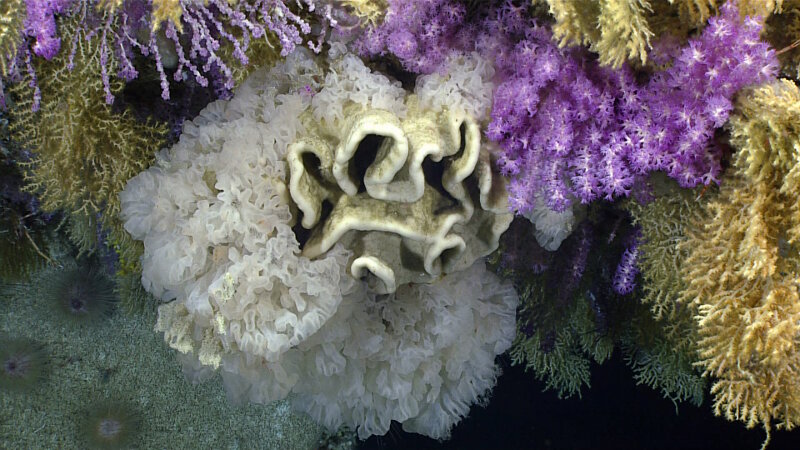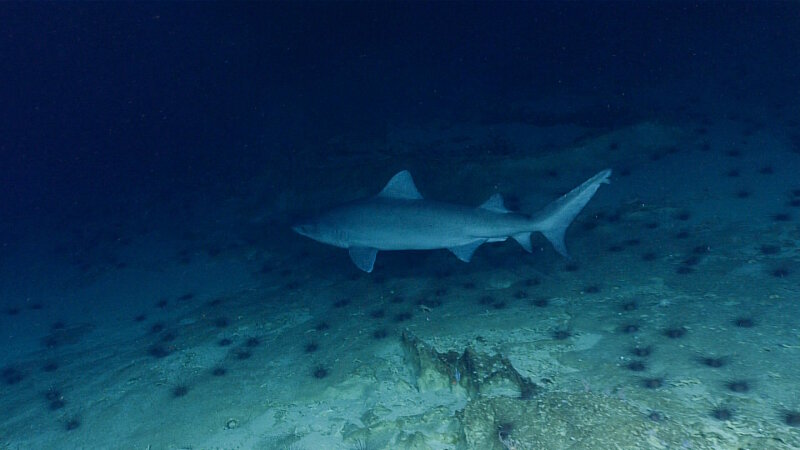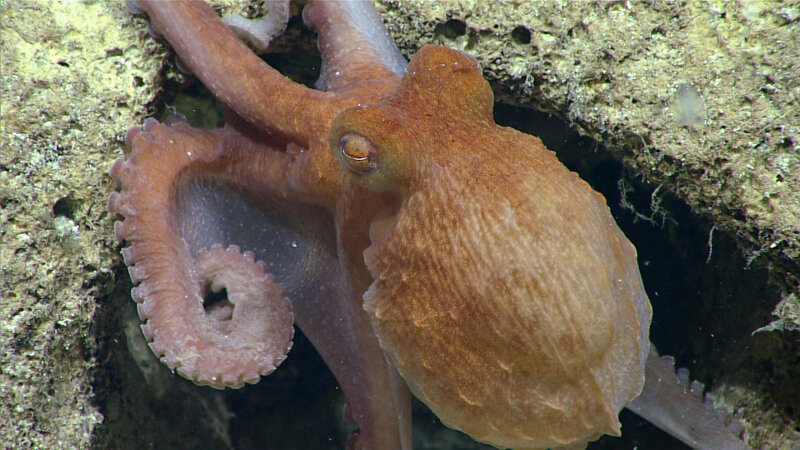-

We found an unusual umbrella-shaped pedestal that was covered with corals and sponges towards the end of Dive 05 of the expedition. Zooming in revealed numerous shrimp, crabs, brittle stars, and fish living within this structure. Image courtesy of the NOAA Office of Ocean Exploration and Research, Mountains in the Deep: Exploring the Central Pacific Basin. Download larger version (jpg, 1.6 MB).
-

This sand tiger shark came by to check out remotely operated vehicle Deep Discoverer during the fifth dive of the expedition. Image courtesy of the NOAA Office of Ocean Exploration and Research, Mountains in the Deep: Exploring the Central Pacific Basin. Download larger version (jpg, 1.2 MB).
-

We saw an octopus for "Octopus Friday" on Dive 05 of the expedition. Image courtesy of the NOAA Office of Ocean Exploration and Research, Mountains in the Deep: Exploring the Central Pacific Basin. Download larger version (jpg, 1.8 MB).